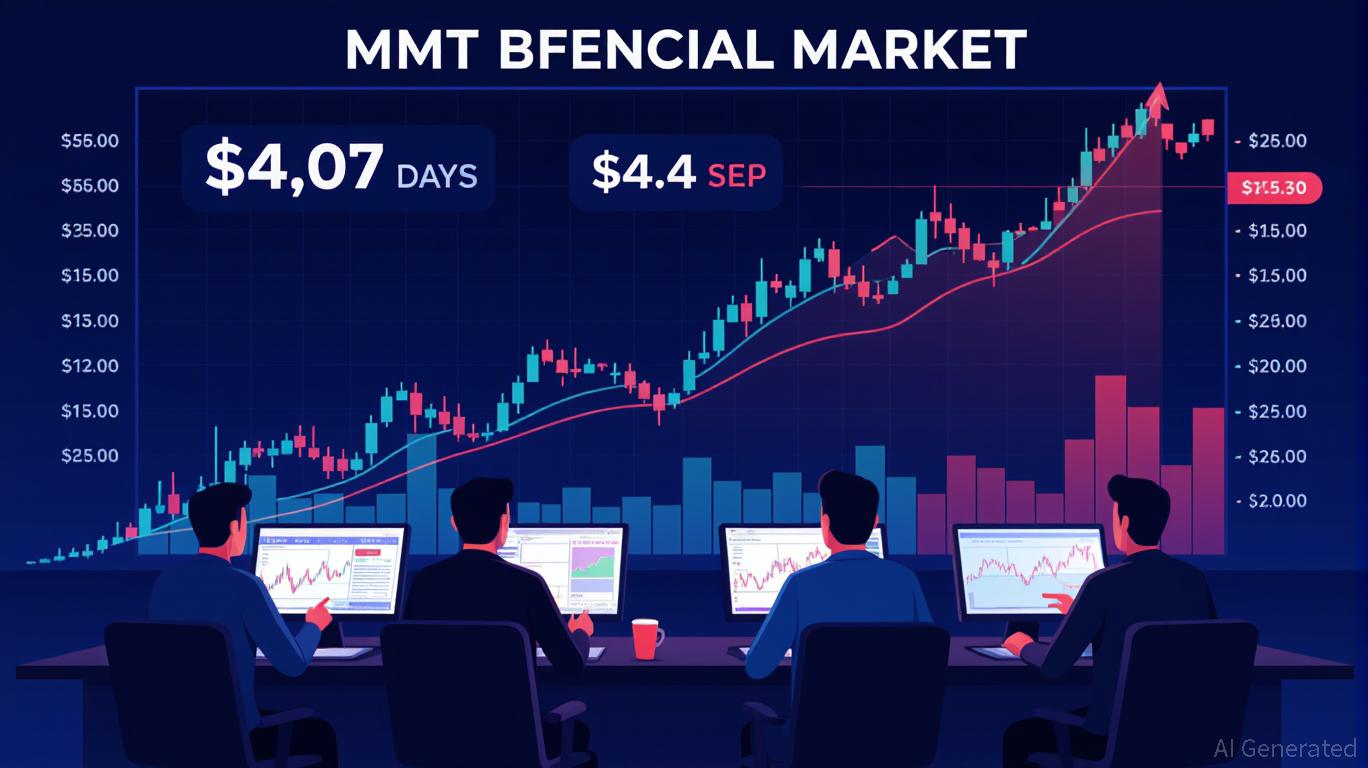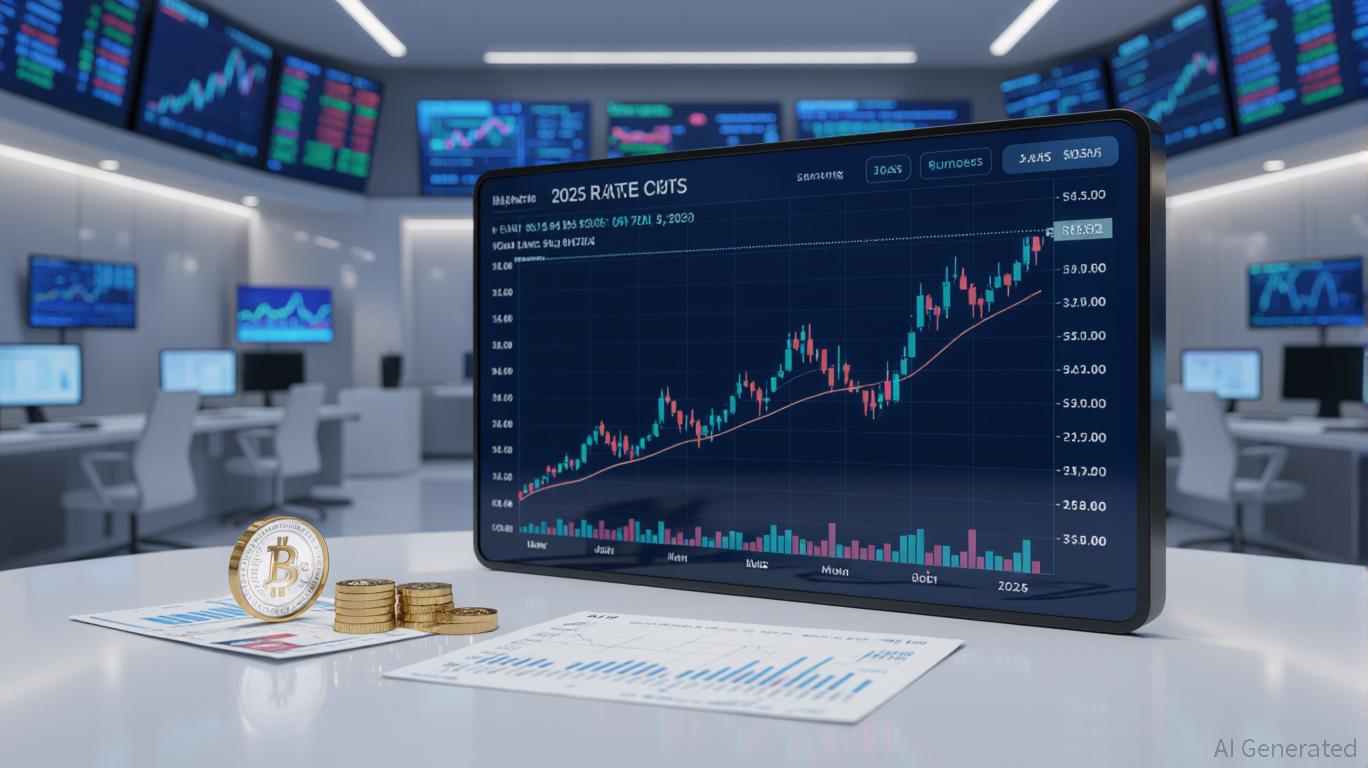The Growing Buzz Around Momentum (MMT): Could This Be the Next Big Thing in Crypto?
- Momentum (MMT) surged to $5.18B market cap after Binance's oversubscribed Prime Sale and explosive listing price spikes. - Built on Sui blockchain, MMT's ve(3,3) liquidity model and CLMM architecture aim to optimize DeFi capital efficiency and trading. - Institutional tools like MSafe and RWA integration via Momentum X address DeFi's security and compliance challenges. - Extreme volatility and speculative trading raise sustainability concerns despite Binance's airdrop-driven network effects.
Market Sentiment: Demand and Volatility Collide
Momentum’s recent performance has been remarkable. This overwhelming interest highlighted strong investor belief in MMT’s prospects, especially with Binance’s backing through its Seed + Label initiative.
The excitement persisted on November 4, when MMT debuted on Binance. Within mere hours, the token soared almost 800%, reaching a peak of $0.8859, according to a
Binance’s airdrop campaign has further fueled this short-term enthusiasm. Eligible participants received 7.5 million MMT tokens, encouraging both engagement and liquidity, as reported by a

Technical Foundation: Ecosystem Powered by Ve(3,3)
Looking past the buzz, MMT’s underlying technology sets it apart as a serious player in DeFi. Built on the Sui blockchain, the platform utilizes Sui’s high-speed infrastructure to implement a concentrated liquidity market maker (CLMM) system. This approach lets liquidity providers focus their capital within chosen price bands, boosting efficiency and minimizing slippage for traders, as described in a
Central to MMT’s design is its ve(3,3) liquidity mechanism, which draws inspiration from Curve Finance’s governance model. By locking up MMT tokens, users receive vMMT (vote-escrowed MMT), granting them the ability to vote on where protocol rewards are directed, typically toward the most lucrative liquidity pools. This structure aligns the interests of liquidity providers, traders, and holders, ensuring capital is allocated efficiently, as outlined in a
Sui’s Programmable Transaction Blocks (PTB) further improve the user experience by allowing complex actions—such as swapping tokens and claiming rewards—to be completed in a single transaction, lowering gas fees and streamlining use, as mentioned in a
To attract institutional users, MMT offers MSafe, a multi-signature wallet designed for Move-based blockchains, and Momentum X, a compliance solution for integrating real-world assets (RWAs). These features address major DeFi challenges such as security and regulatory requirements, as highlighted in a
Is MMT a Game-Changer or Just a Passing Trend?
The blend of advanced technical features and intense market enthusiasm indicates that MMT could be more than a temporary phenomenon. Its ve(3,3) model and Sui-based decentralized exchange provide scalable, accessible solutions to DeFi’s liquidity issues, while Binance’s airdrop has amplified its reach. Still, the token’s sharp price swings and heavy reliance on speculation raise concerns about its long-term prospects.
For MMT to sustain its momentum, it will need to show steady on-chain engagement and practical adoption that goes beyond the initial airdrop excitement. The rollout of RWAs through Momentum X and the platform’s AI-powered liquidity routing are encouraging developments, but only time will reveal if these innovations lead to lasting value.
Conclusion
Momentum (MMT) has quickly become a focal point in the crypto sector, combining technical advancements with strong market momentum. While its recent price surges reflect speculative interest, the platform’s foundation—built on Sui’s scalability and the ve(3,3) model—offers real potential for disruption. Investors should keep an eye on blockchain activity, institutional uptake, and regulatory shifts to determine whether MMT’s rise marks a new era or is simply a brief surge.
Disclaimer: The content of this article solely reflects the author's opinion and does not represent the platform in any capacity. This article is not intended to serve as a reference for making investment decisions.
You may also like
SOL Price Forecast 2025: Enhanced On-Chain Engagement and Network Improvements Propel Solana Toward Its Upcoming Bull Run
- Solana (SOL) gains traction in 2025 with 17.2M active addresses and 543M weekly transactions, outperforming Ethereum and BNB Chain. - Network upgrades like Alpenglow (Q1 2026) and Firedancer (Q3 2025) aim to achieve sub-second finality and 1M+ TPS, boosting institutional adoption. - ZK Compression v2 slashes transaction costs by 5,200x, while $118M inflows during October 2025 outflows highlight growing ETF and retail demand. - Rising TVL ($42.4B peak) and Bitcoin Hyper integration position Solana as a sc

Fed Policy Changes and Their Ripple Effects on Solana (SOL): A Macro Perspective on Altcoin Price Fluctuations and Opportunities for Institutional Investors
- Fed's 2025 policy shifts-sparking $35B/month Treasury purchases and 3.75-4.00% rate cuts-boosted Solana's institutional appeal via liquidity injections. - Bitwise Solana ETF raised $417M in debut week, leveraging Solana's 3,800 TPS speed and $10.3B DeFi TVL to attract yield-seeking capital. - 20% Solana price corrections post-Fed cuts failed to deter $2.1B inflows, highlighting institutional strategies using macroeconomic signals and dynamic risk frameworks. - Solana's 0.9 gold correlation and -0.2 S&P 5

Bitcoin Updates: Veteran Bitcoin Holders Swap HODLing for ETFs as Digital Gold Attracts More Institutional Interest
- Bitcoin OGs increasingly sell holdings to ETFs for tax deferrals and institutional legitimacy, signaling market maturation. - U.S. tax advantages enable long-term holders to optimize returns amid slower growth, shifting from "HODL" to strategic diversification into AI/DePIN. - ETF outflows pressure Bitcoin's price, yet on-chain data shows long-term holders remain net accumulators, reflecting tactical repositioning. - Institutional adoption grows as Bitcoin gains recognition as inflation hedge, with Black

"UBS Weighs Risk Management While Expanding in India During Strategic Shifts"
- UBS downgraded MTR to "Sell" citing high capex and weak land returns, despite short-term optimism over a HKD6B Tuen Mun project awarded to Sun Hung Kai. - The bank is liquidating O'Connor funds hit by First Brands' bankruptcy, expecting 70% recovery by year-end and 30% by 2025, highlighting systemic risks from the supplier's $10B liabilities. - UBS expands in India by leasing Mumbai office space at 460 rupees/sqft, reflecting cost-efficient post-merger integration and growth focus amid global economic un